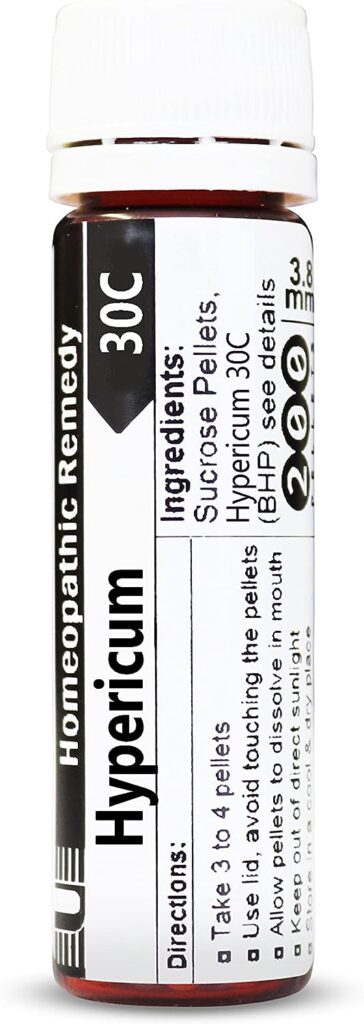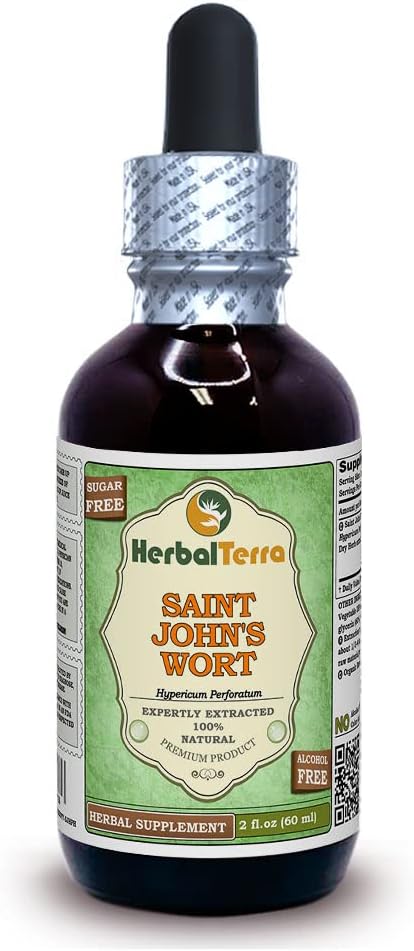Hypericum Perforatum, commonly known as Hypericum or St. John’s Wort, is a pivotal remedy in the homeopathic arsenal, particularly renowned for its efficacy in addressing nerve-related injuries and ailments. Its applications span across various scenarios where nerve-rich areas are affected, such as fingers, toes, and the spine, notably the coccyx.

Pain Treatment:
The hallmark of the Hypericum remedy’s therapeutic value lies in its profound ability to alleviate intense and often sharp or shooting pain that ensues after injuries, encompassing crushes, blows, cuts, grazes, or puncture wounds to these sensitive regions. The remedy extends its utility to addressing certain types of phantom pain, as well as the aftermath of shock or trauma. Notably, individuals who are likely to benefit from Hypericum frequently exhibit a preference for warm beverages.
Animal Bites & Stings:
The Hypericum remedy’s effectiveness becomes particularly evident in cases of animal bites and stings, where it demonstrates its characteristic capacity to mitigate shooting pains that radiate along nerve pathways. Moreover, the remedy’s aptitude for puncture wounds and injuries to fingertips underscores its suitability for situations involving potential nerve damage.

Spinal Injuries:
A distinctive attribute of Hypericum emerges prominently in its application to spinal injuries, where the remedy excels in alleviating the excruciating shooting pain that escalates along nerve pathways, a pain often exacerbated by raising the arms. This phenomenon further extends to instances like toenail or fingernail avulsions, fingers caught in doors, and nail-related injuries, where the remedy ably addresses the sharp shooting pain that follows.
Dental Application & Animals:
Hypericum’s range of action encompasses dental ailments as well, where it shines in the context of shooting nerve pain post dental procedures. Moreover, the remedy extends its benefits to the post-surgical phase, effectively managing shooting nerve pain that might manifest following surgical interventions. In addition, Hypericum exhibits its efficacy in addressing painful scars resulting from various injuries and surgical procedures. Its application is extended to pets suffering from puncture or crush wounds, as well as insect bites and stings characterized by heightened sensitivity to touch. The intricate relationship between Hypericum and nerve-related issues underscores the remedy’s valuable contribution to the realm of homeopathic therapeutics.
Historical Context:
St. John’s Wort, bears historical significance that spans centuries and cultures. Its name itself is steeped in history, referencing the nativity of St. John the Baptist, as the plant blooms around the time of the feast day of this revered Christian figure. Beyond its religious connotations, St. John’s Wort has a rich medicinal history that dates back to ancient times. Indigenous peoples across various geographical regions, from Europe to Asia, harnessed the plant’s healing properties for an array of ailments. In ancient Greece, the renowned physician Hippocrates advocated for its use in treating various maladies, attributing to it the ability to address wounds, inflammations, and nervous disorders.

Folklore:
In the context of European folklore, St. John’s Wort became associated with warding off evil spirits and negative energies due to its bright yellow flowers and its propensity to bloom around the time of the summer solstice. This cultural belief intertwined with its medicinal reputation, as the plant’s extracts were used to create ointments for treating wounds, burns, and skin irritations. Moreover, its perceived ability to bring light and healing to dark and melancholic states fostered the plant’s association with mental health and emotional well-being. The geographical distribution of St. John’s Wort is noteworthy, as it thrives in sunny and open areas across Europe, North America, and parts of Asia. Its adaptability to various climates and its proliferation in meadows, fields, and along roadsides allowed for easy accessibility to the plant for traditional healing practices.
